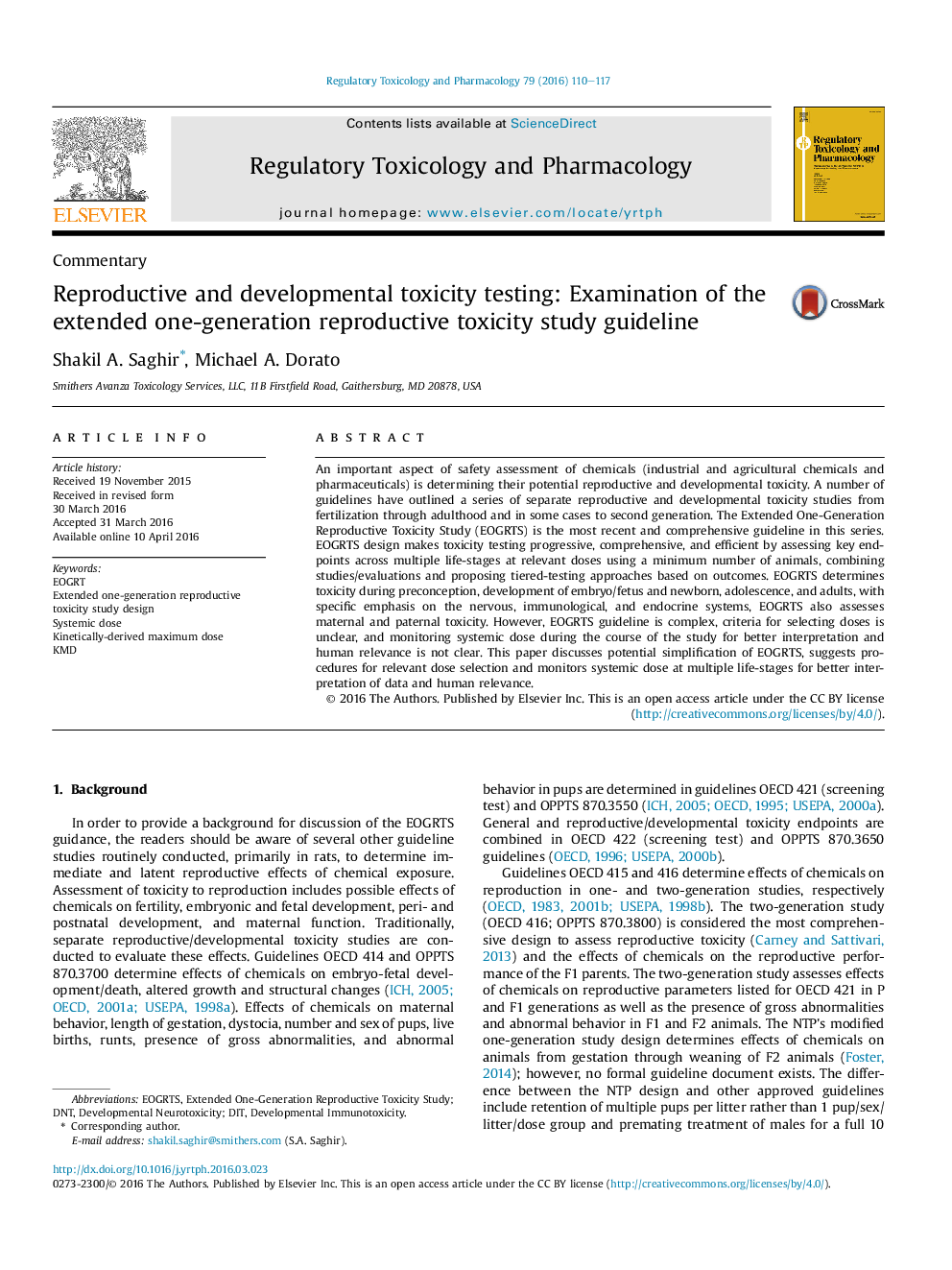| Article ID | Journal | Published Year | Pages | File Type |
|---|---|---|---|---|
| 5856026 | Regulatory Toxicology and Pharmacology | 2016 | 8 Pages |
â¢Review of extended one-generation reproductive toxicity study (EOGRTS) guideline.â¢Ways to make EOGRTS guideline easier to follow.â¢Suggests procedures to select relevant doses for EOGRTS.â¢Ways to monitor systemic dose at different life stages in EOGRTS.â¢Improvements to EOGRTS design for better interpretation of data and human relevance.
An important aspect of safety assessment of chemicals (industrial and agricultural chemicals and pharmaceuticals) is determining their potential reproductive and developmental toxicity. A number of guidelines have outlined a series of separate reproductive and developmental toxicity studies from fertilization through adulthood and in some cases to second generation. The Extended One-Generation Reproductive Toxicity Study (EOGRTS) is the most recent and comprehensive guideline in this series. EOGRTS design makes toxicity testing progressive, comprehensive, and efficient by assessing key endpoints across multiple life-stages at relevant doses using a minimum number of animals, combining studies/evaluations and proposing tiered-testing approaches based on outcomes. EOGRTS determines toxicity during preconception, development of embryo/fetus and newborn, adolescence, and adults, with specific emphasis on the nervous, immunological, and endocrine systems, EOGRTS also assesses maternal and paternal toxicity. However, EOGRTS guideline is complex, criteria for selecting doses is unclear, and monitoring systemic dose during the course of the study for better interpretation and human relevance is not clear. This paper discusses potential simplification of EOGRTS, suggests procedures for relevant dose selection and monitors systemic dose at multiple life-stages for better interpretation of data and human relevance.
